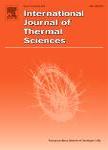版权所有:内蒙古大学图书馆 技术提供:维普资讯• 智图
内蒙古自治区呼和浩特市赛罕区大学西街235号 邮编: 010021

作者机构:Xi An Jiao Tong Univ State Key Lab Multiphase Flow Power Engn Xian 710049 Shaanxi Peoples R China Xi An Jiao Tong Univ Sch Human Settlements & Civil Engn Dept Bldg Environm & Serv Engn Xian 710049 Shaanxi Peoples R China
出 版 物:《INTERNATIONAL JOURNAL OF THERMAL SCIENCES》 (国际热科学杂志)
年 卷 期:2019年第136卷
页 面:52-59页
核心收录:
学科分类:080702[工学-热能工程] 08[工学] 0807[工学-动力工程及工程热物理] 0802[工学-机械工程]
基 金:Fundamental Research Funds for the Central Universities of China [XJJ2018071]
主 题:Rotary air preheater Thermal-hydraulic performance Weight Optimization Ammonium bisulfate deposition
摘 要:Although much work has been done on the optimization of the recuperative heat exchangers, little attention has been paid to the optimization of rotary regenerative air preheater (RAPH) in coal-fired power plants. It is known that the ammonium bisulfate deposition (ABS) can adversely affect the safe operation of RAPH, so an improved Radian number was proposed to estimate the impact of ABS in the optimization of RAPH. The thermal hydraulic calculation program integrated with genetic algorithms was developed to conduct optimizations of RAPH. The design parameters included rotor radius, each fluid sector angle and each matrix layer height. The multi-objective optimization was carried out to maximize the effectiveness and to minimize the pressure drop from the perspective of users, while the single-objective optimization was performed to minimize the weight of the heat transfer elements from the perspective of manufacturers. The improved Radian number is more reasonable to reflect the ABS deposition compared with the original Radian number. The designer can estimate the ABS deposition status using the improved Radian number not only in the operating process but also in the design process of RAPH. The range of optimal solution becomes smaller but the rank of the Pareto solution stays unchanged with the decrease in the restriction of improved Radian number. The optimization with larger rotor radius restriction could obtain better Pareto results. The total weight of heat transfer elements could be reduced by at least 26.5% compared with that of the original design by using genetic algorithm.